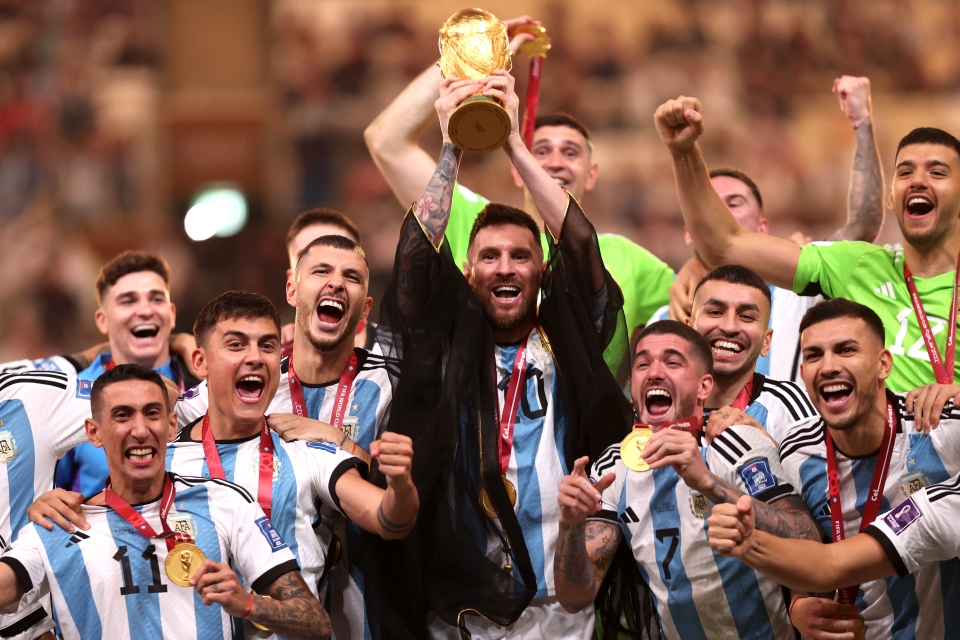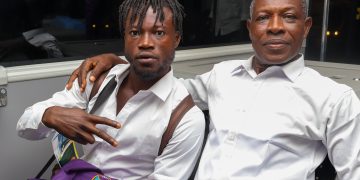Argentina’s amazing triumph over France in the World Cup final was celebrated by Lionel Messi lifting the trophy while donning a black cloak.

The championship game of Qatar 2022 was a game to remember, with Argentina winning on penalties after 120 minutes of thrilling action had ended 3-3.
The Alibceleste playing their second World Cup final in the last three editions, headed into halftime with a 2-0 lead thanks to a Messi penalty and a goal from Angel Di Maria.
Before Kylian Mbappe tied the score for France with two goals in 97 seconds, one of which was a penalty and the other a beautifully executed volley, Argentina appeared to be cruising to a decisive victory.
Messi then scored early in the second extra period, but another Mbappe penalty denied Argentina a victory.
Anytime France wins the World Cup, the following World Cup is decided on penalty kicks, so Argentina came out on top as Emiliano Martinez stopped Kingsley Coman’s penalty kick and Aurelien Tchouameni missed the target. The match was then determined by the dreaded shootout. All four of Argentina’s penalties resulted in goals.

Before receiving the trophy that had eluded him his entire career, Messi was named the tournament’s Player of the Year.
He mingled with FIFA President Gianni Infantino and Qatar’s Emir Tamim bin Hamad Al Thani prior to the memorable moment, and the latter put a cloak on him moments before the trophy lift.
A bisht, a common men’s cloak in the Arab world with a history that is said to trace back thousands of years, is what Messi was wearing.
A bisht is worn on important occasions, such as weddings or festival celebrations like Eid, the Muslim holy holiday that commemorates the conclusion of the one-month-long dawn-to-dusk fasting of Ramadan.

Professor of Islamic Studies at the University of Exeter, Dr. Baig Mustafa, elaborated on the significance of a cloak in Arabian civilization while discussing Messi’s wearing of the garment.
Dr. Baig stated, “Only a select few people would actually wear the bisht. They basically honoured him by putting it over his shoulders. It’s like a mark of honour and just kind of a cultural welcoming and a cultural acceptance.”






















